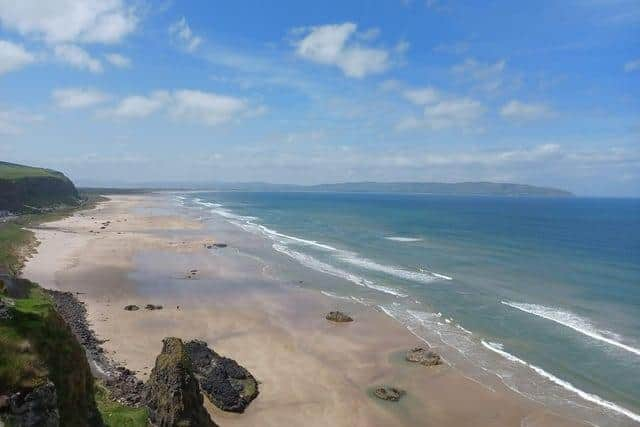Bathing quality at popular north Derry beaches ‘excellent’ meeting Blue Flag standard
and live on Freeview channel 276
The spectacular Derry beaches were among 18 out of 26 identified bathing waters across the North to receive the ‘excellent’ benchmark when measured against the standards for faecal indicator organisms.
An ‘excellent’ categorisation is a prerequisite for the coveted Blue Flag Award and the highest water quality standard.
Advertisement
Hide AdAdvertisement
Hide AdThe other beaches given an ‘excellent’ classification were Ballycastle, Ballygally, Ballyhornan, Brown’s Bay, Cloughey, Cranfield, Groomsport, Kilclief, Murlough (Co. Down), Portballintrae Salmon Rock, Portrush Curran (East Strand), Portrush Mill (West Strand), Portrush Whiterocks and Tyrella.


A DAERA spokesperson said: “Even though the weather this summer was more unsettled than previous years, it is very encouraging to see so many of Northern Ireland’s bathing waters maintaining high standards for water quality. Although there is some reduction in water quality, this is to be expected given the weather conditions, with the wettest July on record.”
A remaining seven of the 26 beaches were deemed to have either ‘good’ or ‘sufficient’ water quality when tested for the presence of both the Escherichia Coli and Intestinal Enterococci bacteria which are found in human faeces.
All of these beaches – located south of the Straits of Moyle in the Irish Sea area – missed out on an ‘excellent’ categorisation because the number of colony forming units of E.Coli and Enterococci per 100 millilitres of water exceeded the requisite level on testing days.
Advertisement
Hide AdAdvertisement
Hide AdBallywalter, Crawfordsburn, Carnlough, Helen’s Bay, Millisle and Waterfoot received a ‘good classification’ and Newcastle, a ‘sufficient’ classification.
The water quality at Ballyholme in Bangor was deemed ‘poor’.
The DAERA spokesperson also referred to the development of cyanobacterial blooms in Lough Neagh and the River Bann which led to the precautionary and temporary closure of Castlerock, Portstewart and Magilligan to swimmers during the summer.
"This is the first time that we have seen blue-green algae blooms affecting the quality of some bathing waters and we know this created significant impacts and disappointment for those who love to use our waters.
Advertisement
Hide AdAdvertisement
Hide Ad“Our bathing waters are a huge asset to Northern Ireland, valued by locals and visitors alike. We take our responsibilities for water quality seriously.
"While there are no quick fixes to the situation that occurred this summer on Lough Neagh, we are working closely with scientific and other experts on proposals that can deliver improvement for the future.
"In the meantime, we will not hesitate to take action where there is evidence that the laws in place to protect our bathing waters are not being adhered to,” the spokesperson said.
In 2023, there were 20 samples collected at each identified bathing water for faecal indicator organisms during the season.
Advertisement
Hide AdAdvertisement
Hide AdIn addition to monitoring faecal indicator organism levels via water sampling, visual assessments for possible pollution incidents, including presence of waste, proliferation of macroalgae (seaweed) and algal scums and blooms (including blue-green algae) are also made during each sampling run (20 times per site over the season).
Where there are concerns of risks to bathers’ health from a visual assessment of, for example, blue-green algae, further assessment is made by taking water samples to establish levels in relation to agreed health guidelines for safe bathing.
